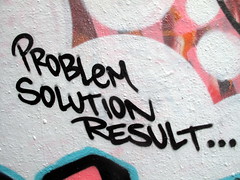 Some nonprofits do a good job of communicating with their donors, but many do not and that’s a problem.
Some nonprofits do a good job of communicating with their donors, but many do not and that’s a problem.
Mediocre or poor donor communication will hinder your success. If you wonder why your retention rates are floundering that may be the reason. Here are a few common donor communication problems and how you can fix them.
Sending your donors the same appeal letter
Your donors are not the same, so why are you sending everyone the same generic appeal letter? When you do this, you’re showing your donors you don’t know who they are.
I recently received a letter that was a good appeal, but didn’t recognize me as a monthly donor or acknowledge any previous donations. Monthly donors shouldn’t get a generic appeal like this. What should have happened is the organization should have thanked me for my monthly gifts and either asked for an upgrade or an additional one-time gift.
The same applies if someone is a theatre subscriber, museum member, or college alumni. I spend a significant amount of money on a theatre subscription. It’s perfectly fine for this theatre to ask for an additional donation, but I also want them to thank me for being a long-time subscriber.
This happens way too often. You should always recognize a donor’s past support.
Here’s an organization that did that. Their appeal letter opened with For the past 4 years, your generosity has made a world of difference. Wow, this organization knows me! The appeal included several instances where they mentioned how my support has made a difference.
What kind of message are you sending to your donors? That you recognize them for who they are or that they’re just a source of revenue for you?
6 easy ways to segment your fundraising appeal letter
Thank you letters that don’t focus on gratitude
The purpose of a thank you letter is to thank your donor. It’s not to brag about your organization or explain what your organization does. It’s also not a receipt. You can include a donation summary, but don’t lead with that or make it the main focus of your letter. If you do that, you’re implying that the donation is a transaction instead of the beginning or continuation of a relationship.
I use the term thank you letter, because that’s what most organizations send. Although, sometimes it’s just an email. You can do a better job of thanking your donors if you send a handwritten note or make a phone call.
I get so many thank you letters and emails that are uninspiring. They lead with the usual On Behalf of X organization before veering into receipt territory. Occasionally, I’ll get a card in the mail that pours on the gratitude with phrases like We cannot thank YOU enough and You make it possible.
Also, the thank you that you send after you receive a donation is just beginning, not the end, of a donor engagement journey that lasts throughout the year.
Take Thanking Your Donors to the Next Level
Newsletters that ignore donors
Newsletters are a big problem area. They’re usually too long, boring, and organization-focused. I recently received an eight-page newsletter written in the third person that primarily mentioned a bunch of accomplishments. It had no stories and read like a promotional piece, which is not the purpose of a donor newsletter.
Your newsletter should show your donors how they’re helping you make a difference.
The magic word you was nowhere to be found in any of the articles. That’s why your newsletter needs to be written in the second person dominated with phrases such as Thanks to you or Because of you.
The only time the organization mentioned donors and used the word you was in a section asking people to give to a Donor Advised Fund (DAF). It was basically a solicitation and required a minimum contribution of $100,000, which most people aren’t going to be able to do. As someone who gives $5.00 a month, I’m certainly not in that demographic.
They didn’t even thank their current donors before asking them to make such a big financial commitment. They would have been better off targeting people who would be likely to donate to their DAF.
You’re ignoring your donors (or at least most of them) when you include a message that’s only relevant to a small number of people.
Of course, you can share your success in your newsletter, but you need to let your donors know how they helped with that. Another organization did a better job with their newsletter. It included a cover letter thanking donors, as well as a success story and a section titled You Make a Difference.
A good rule of thumb for your newsletter is more donor appreciation – less bragging.
Why your fancy newsletter is failing you
You don’t want to upset your donors with poor communication. Send different appeals to different types of donors, write a thank you letter that focuses on gratitude, and continue that appreciation in your newsletter instead of bragging so much about your accomplishments.
[…] Having the right strategy will be a big help with your donor communication. The wrong type of communication can end even the strongest donor relationship. For more on common donor communication problems check out this list. […]
LikeLike
[…] donors, any content that does not move the reader to action, and eventually to a donation, is a failed communication. Focus on the intent of getting donations with your writing will limit the extraneous, which always […]
LikeLike